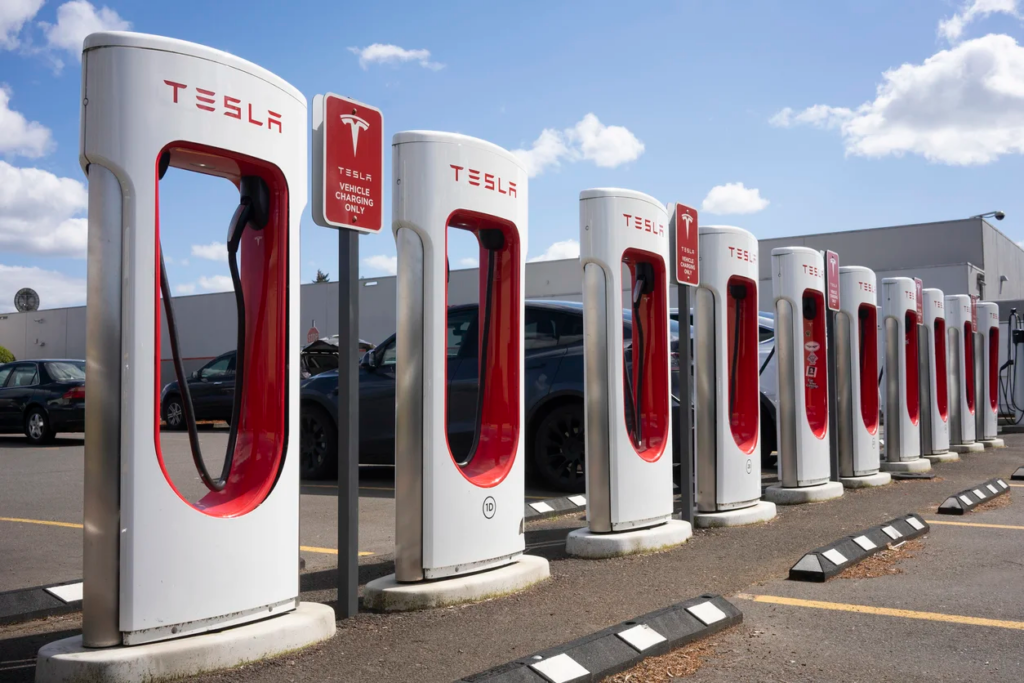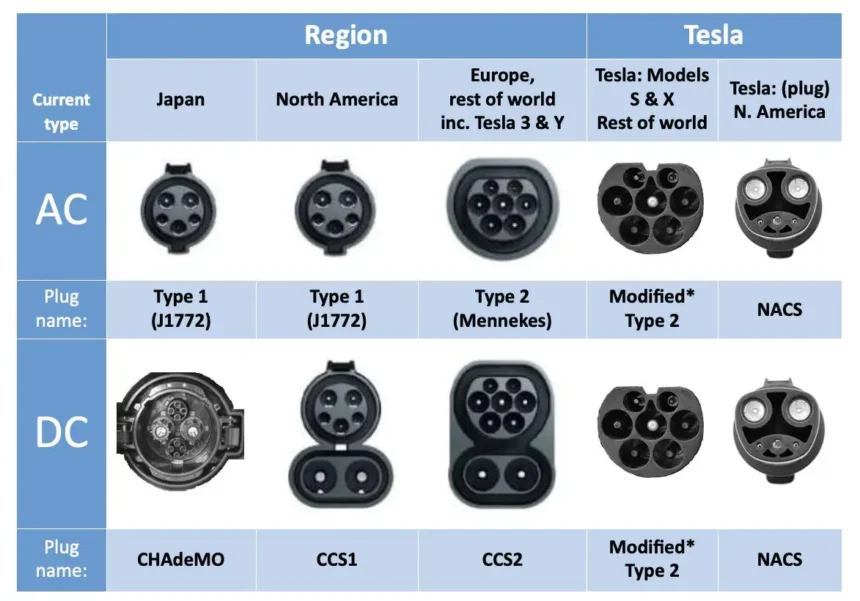Tesla is broadening access to its Supercharger network, allowing various non-Tesla electric vehicles (EVs) to power up at its renowned stations. This initiative comes as Tesla pushes its North American Charging Standard (NACS), aiming to make it a universal EV charging solution. EV owners from brands like Ford, General Motors (GM), Rivian, and Polestar can already access certain Supercharger locations, with more brands joining the list soon.
What’s Happening & Why This Matters
Tesla has opened about 17,800 Superchargers across the U.S. for non-Tesla EVs, starting with Ford, Rivian, GM, and Polestar vehicles. Volvo, Nissan, and Mercedes will follow, with other major carmakers expected to integrate NACS ports by 2025. Although not all Supercharger stations are available to non-Tesla vehicles due to regional and technical restrictions, this move vastly expands charging options for EV drivers.
Tesla is incentivizing non-Tesla drivers to sign up for a monthly Supercharger membership of $12.99 to get similar rates as Tesla owners. Without it, other brand EVs might face higher charging fees. Drivers also need adapters to use Superchargers: Ford and Polestar adapters cost around $230, while GM’s adapter is $225. Tesla is working to eliminate this adapter requirement as more EV brands shift to the NACS port, making charging universally compatible.
NACS Dominance
Tesla has been lobbying to make its NACS port a universal standard, promoting it as a more efficient and user-friendly option than the Combined Charging System (CCS) currently used by other EV makers. Initially, automakers were hesitant to switch, with some, like Mercedes, outright rejecting NACS. However, once Ford made the shift, others quickly followed suit, creating a domino effect.

The NACS standard is now gaining formal recognition. The Society of Automotive Engineers (SAE) is working to certify NACS as a national standard under the new name SAE J3400. Major charging networks like Blink, ChargePoint, and Electrify America are also committing to offering NACS-compatible plug-ins at new stations.
Challenges, Shortages and Access
While this initiative is promising for EV owners, some logistical hurdles remain. Adapters, crucial for connecting non-Tesla EVs to Superchargers, are currently in short supply, with Ford and Rivian owners facing months-long waits. GM has sought multiple suppliers to help ease the backlog, while Polestar estimates two-week delivery times for adapters, signaling that supply may soon catch up with demand.

Another obstacle is the layout of older Superchargers, which may not fit non-Tesla vehicles comfortably. Cables on some stations are too short to reach ports on non-Tesla EVs, potentially causing drivers to reposition awkwardly, obstructing nearby spaces. Tesla is also updating software at its Supercharger stations to support CCS communications. Meanwhile, future stations, described by Ford as “upgraded,” will be more universally accessible.
List of EVs with Supercharging Access Now
Currently, Ford, GM, Rivian, and Polestar EVs have Supercharger access. Tesla’s full lineup is compatible by default (Models 3, S, X, Y, Cybertruck). In the coming months, Volvo, Nissan, and Mercedes EVs will also gain access. By 2025, virtually all EV brands, including Audi, Porsche, Fiat, Honda, Hyundai, BMW, Jaguar, Mini, Toyota, Lexus, Subaru, Lucid, and VW plan to offer models with NACS, eliminating the need for adapters.

TF Summary: What’s Next
Tesla opening its Supercharger network is a major milestone in EV infrastructure standardization. As more EV manufacturers adopt the NACS port, charging is more accessible and user-friendly. Standardized charging simplifies life for drivers and automakers. Modifying older Superchargers and increasing adapter availability is key to making this transition smooth. By 2025, with more brands participating, Elon Musk’s vision for a unified charging network eases convenience and promotes EV adoption.
— Text-to-Speech (TTS) provided by gspeech


